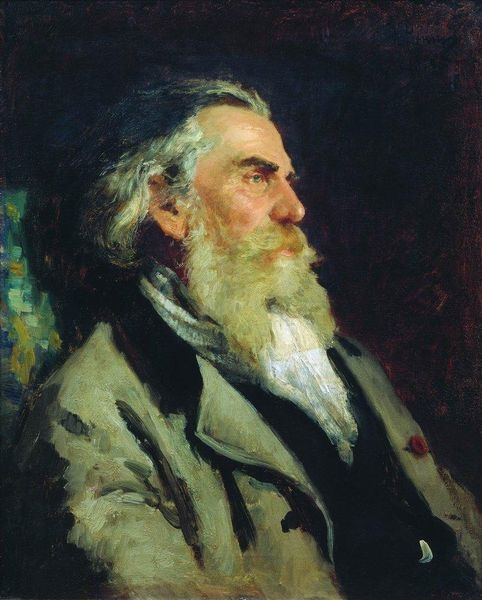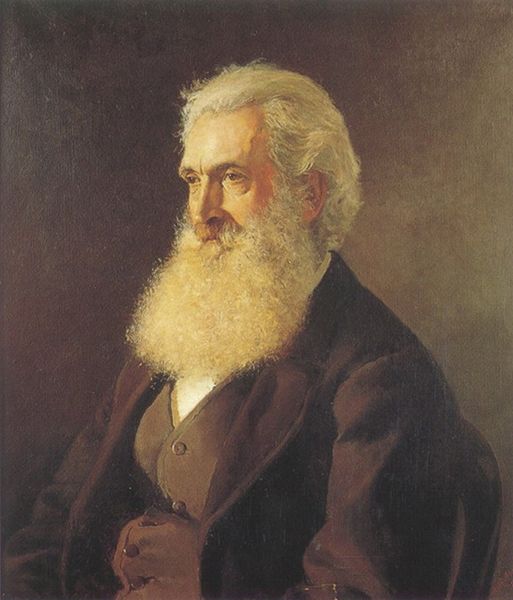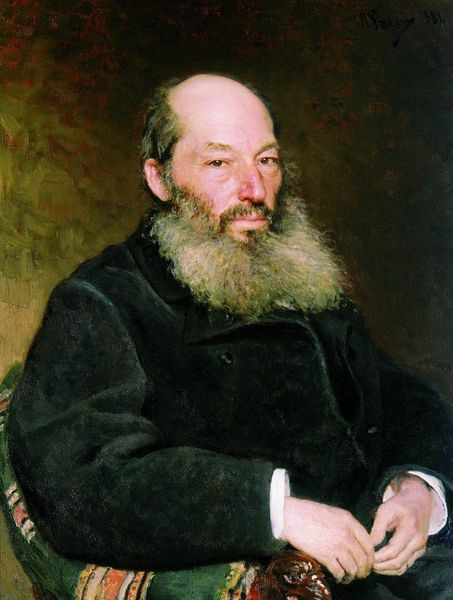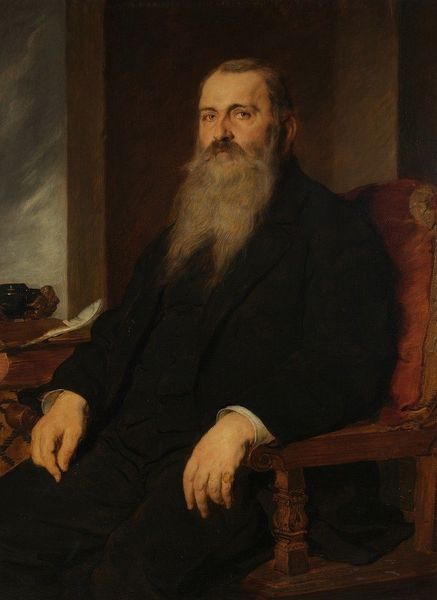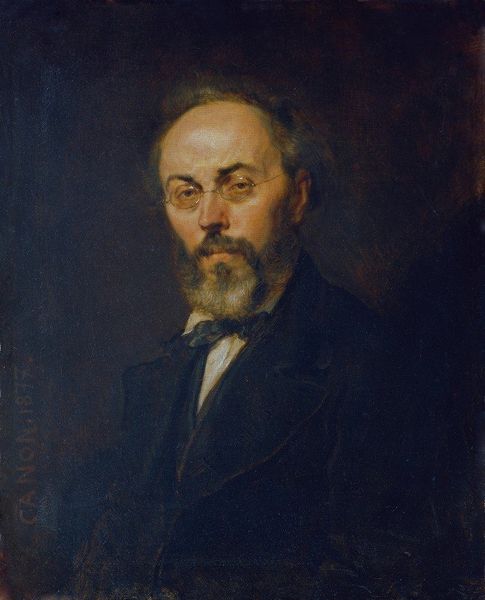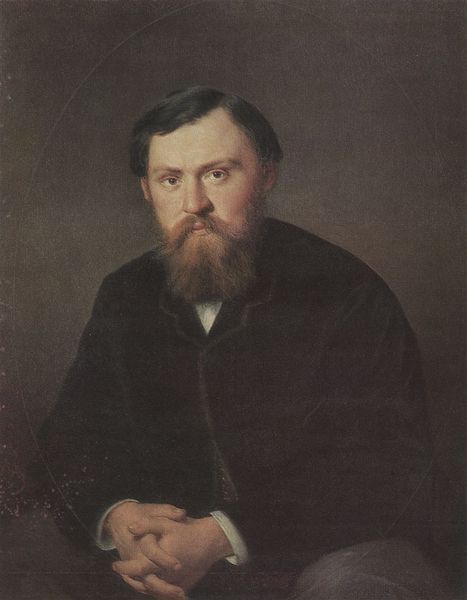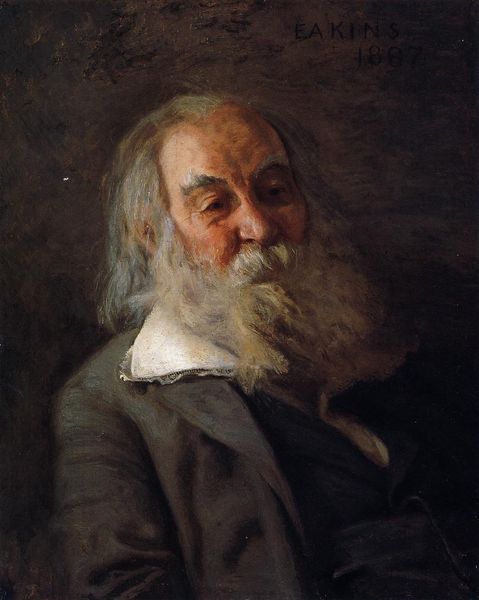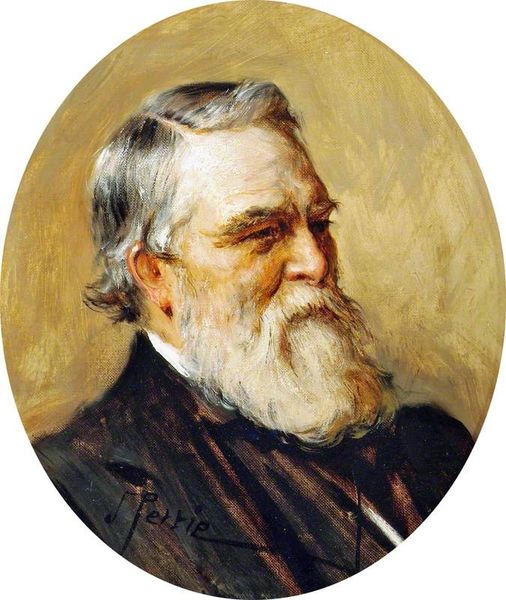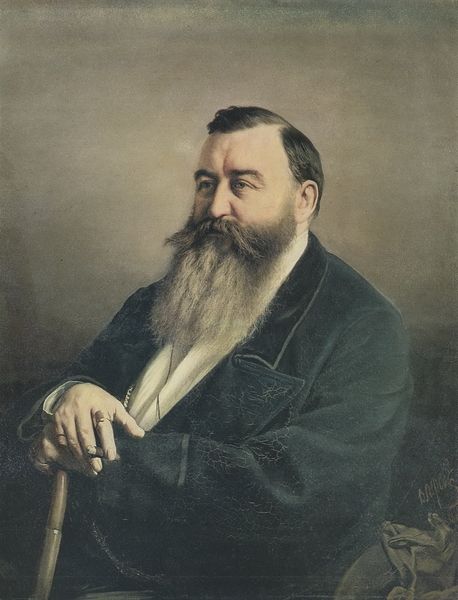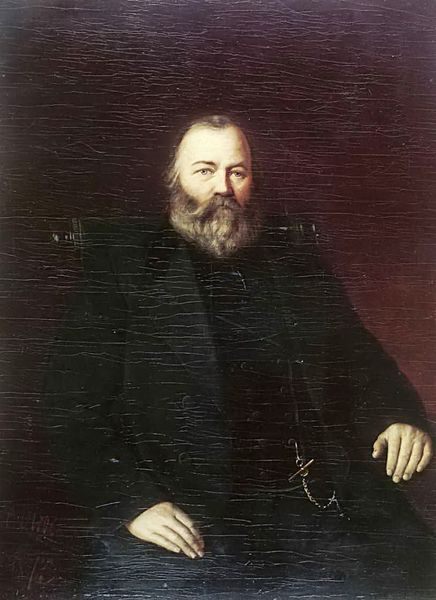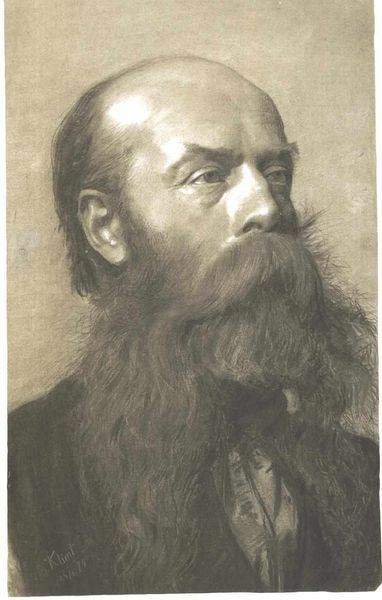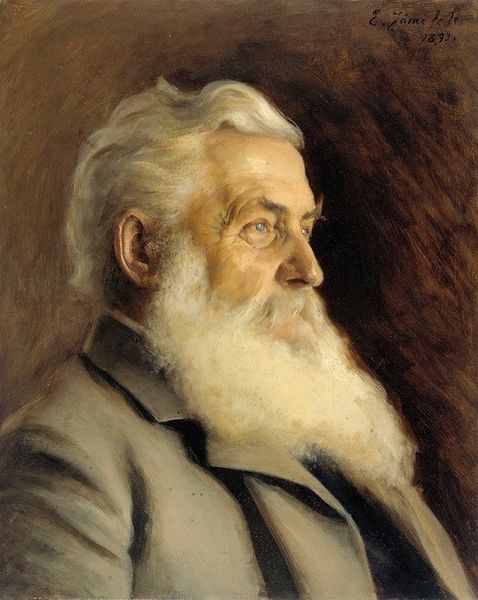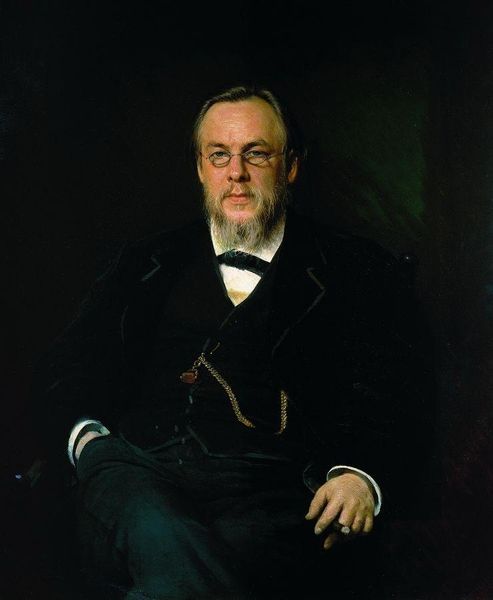
painting, oil-paint
#
portrait
#
portrait image
#
portrait
#
painting
#
oil-paint
#
portrait reference
#
male-portraits
#
portrait head and shoulder
#
russian-avant-garde
#
portrait drawing
#
history-painting
#
facial portrait
#
academic-art
#
portrait art
#
fine art portrait
#
realism
#
celebrity portrait
#
digital portrait
Dimensions: 80 x 62 cm
Copyright: Public domain
Curator: Before us hangs Vladimir Makovsky's "Portrait of I. E. Tsvetkov," painted in 1913. It's currently held in the Tretyakov Gallery in Moscow. What are your initial impressions? Editor: Somber, almost severe. The dark palette and the subject’s intense gaze create a weighty atmosphere. I am drawn to the subtle light reflecting on the velvet jacket, creating textures through the use of oil-paint. Curator: That darkness reflects the complex socio-political landscape of pre-revolutionary Russia. Tsvetkov, as a patron of the arts, occupied a complicated position within that societal framework, mediating between the elite and the burgeoning artistic avant-garde. His gaze could represent anxiety during this time. Editor: It also highlights the craft. Note the layering of the oils and brushstrokes—clearly visible around the face and beard. I find that materiality striking. Consider the availability, price, and pigment production for such work in 1913. It speaks volumes about social access. Curator: Indeed, the artistic choices reflect more than aesthetics. Tsvetkov’s patronage shaped the course of Russian art history, often reinforcing or challenging dominant ideologies of the time. Who had the economic freedom and opportunity to pursue the arts at this historical juncture? What gender, class and ethnic biases were entrenched? Editor: Exactly! And the act of commissioning a portrait itself suggests a level of social capital and a desire to leave a lasting mark. Let’s not ignore the social role portraits played as conveyors of power. Curator: And consider the absence of ornamentation. The plain background and the subject’s simple attire could be interpreted as a rejection of overt displays of wealth in a time of increasing social unrest. Or perhaps this approach reinforced the sitters image as one of austerity and moral rectitude. Editor: Or, simply a reflection of the materials readily accessible. Pigment choice, the canvas weave…they tell a parallel story to the grand narrative. By analyzing materials we uncover a micro-history embedded within a portrait like this one. Curator: This painting provides a rich avenue into understanding the cultural dynamics and intellectual debates of its time. We must think critically and contextually to engage meaningfully with its multiple layers. Editor: Absolutely. For me, this analysis anchors art into the realities of labor and materials that underpin artmaking. I value such insights in fostering greater understandings.
Comments
No comments
Be the first to comment and join the conversation on the ultimate creative platform.
